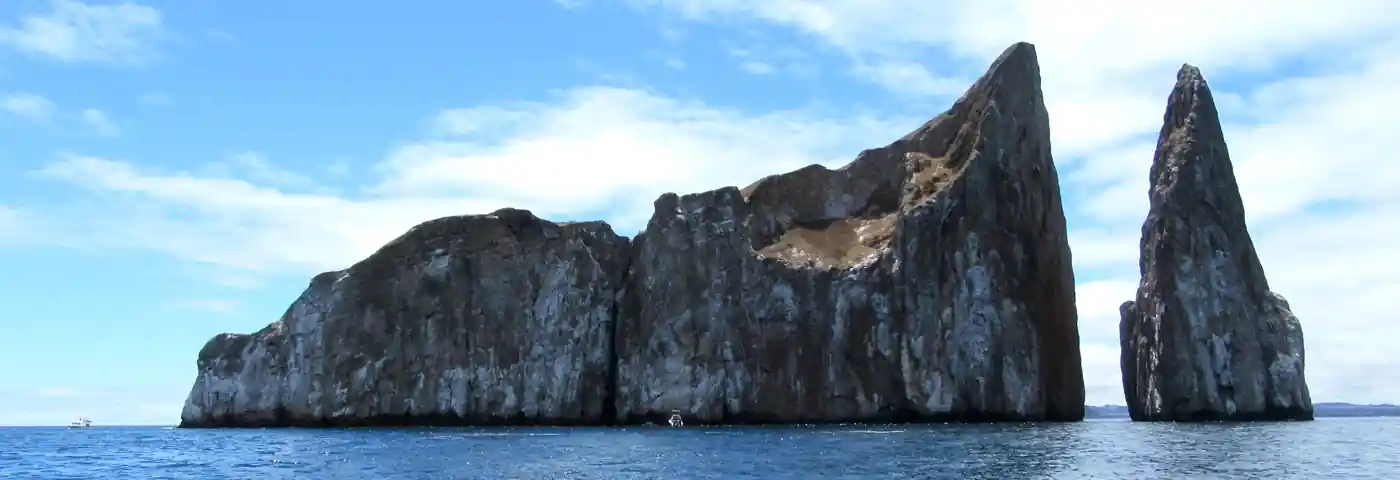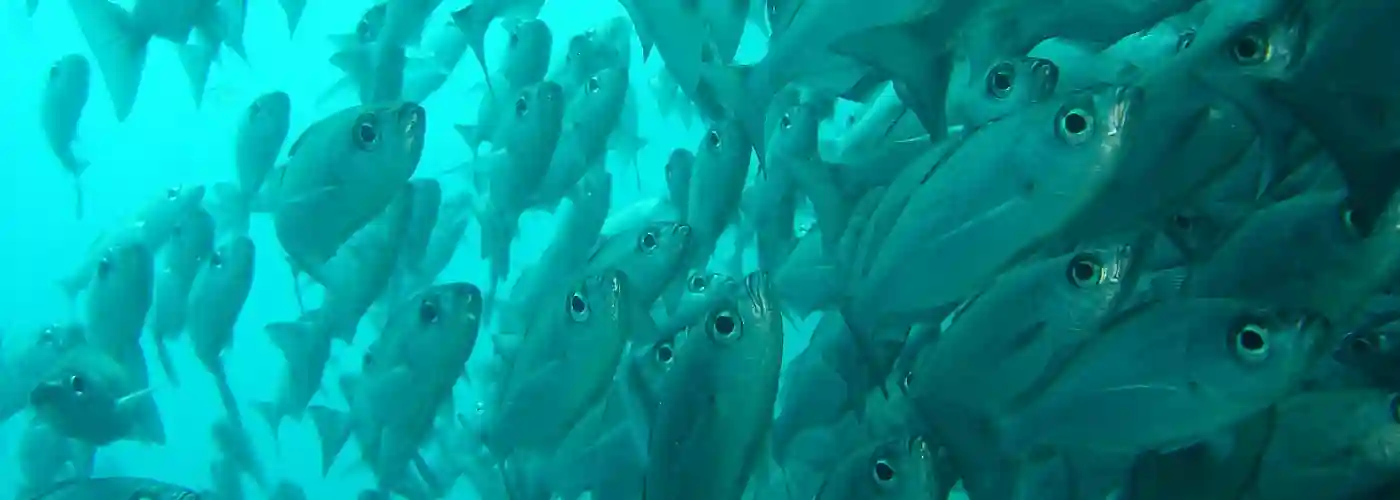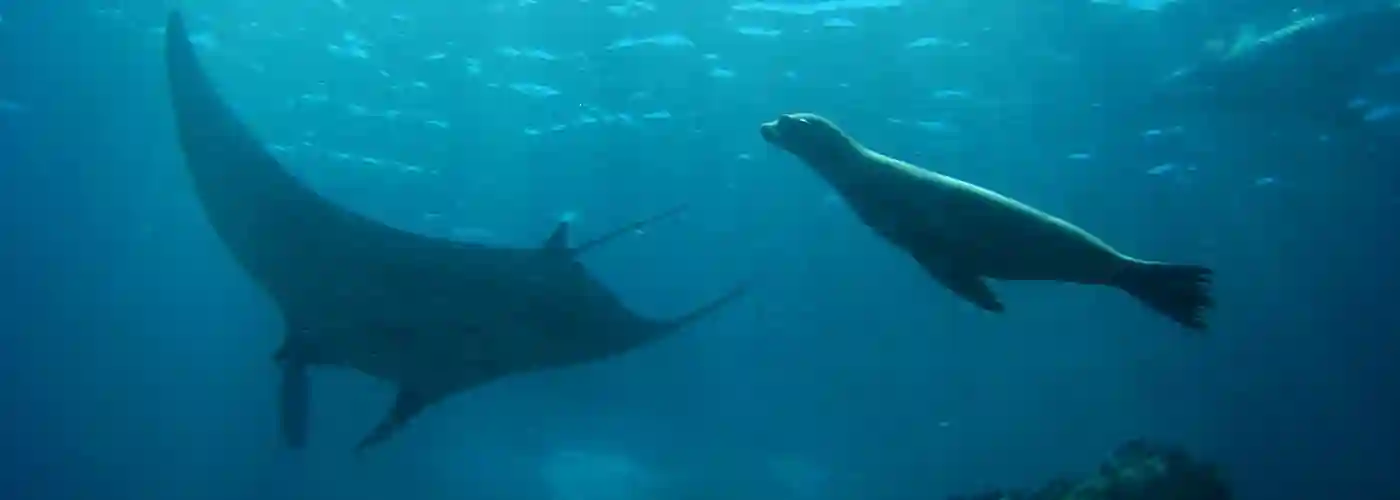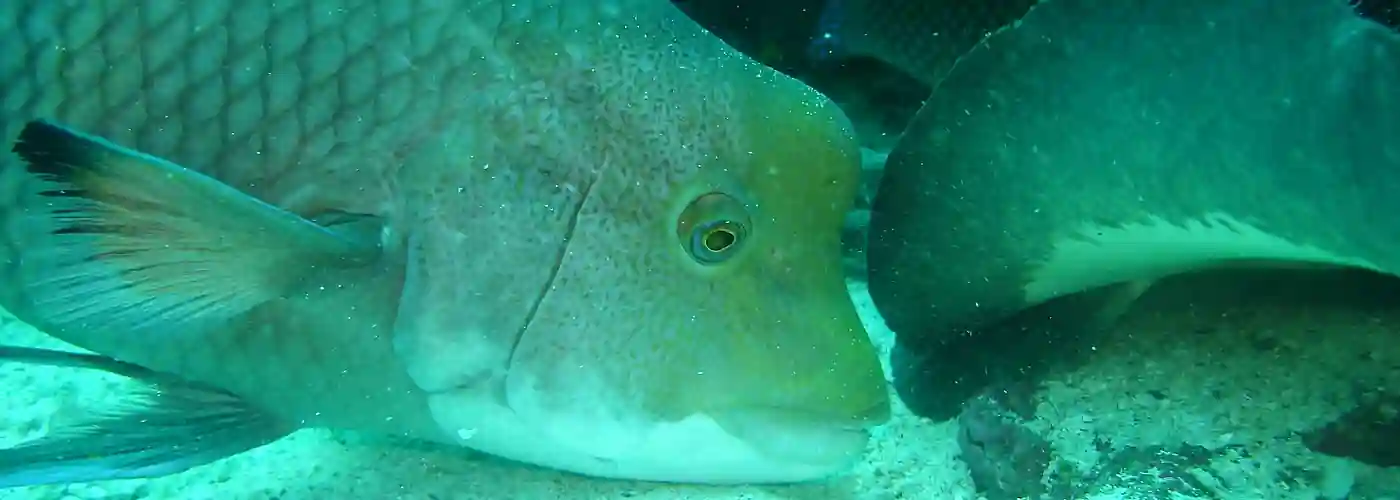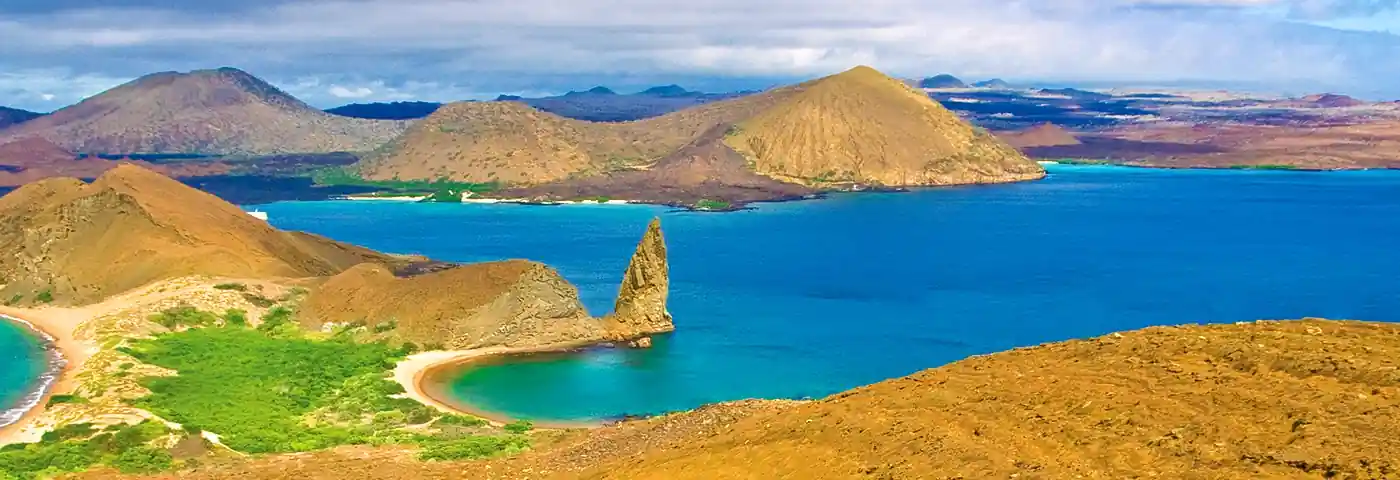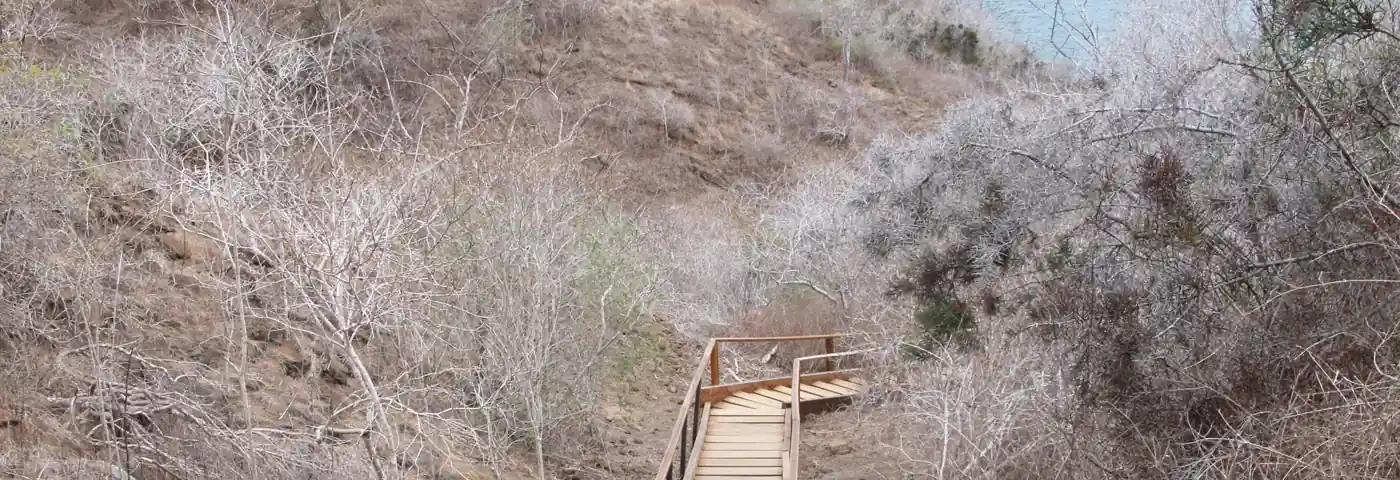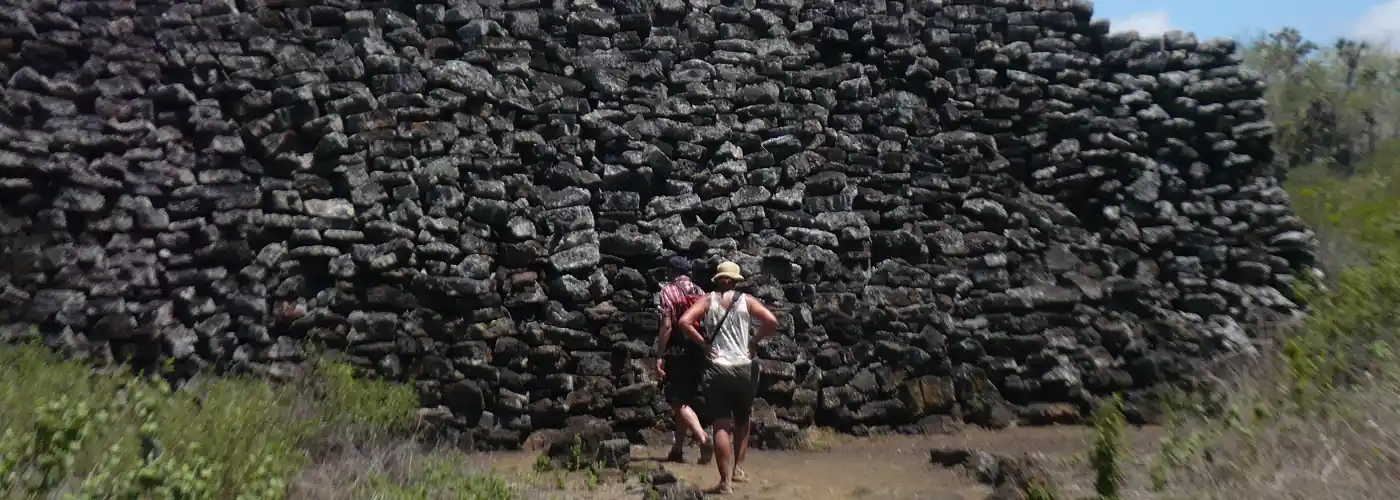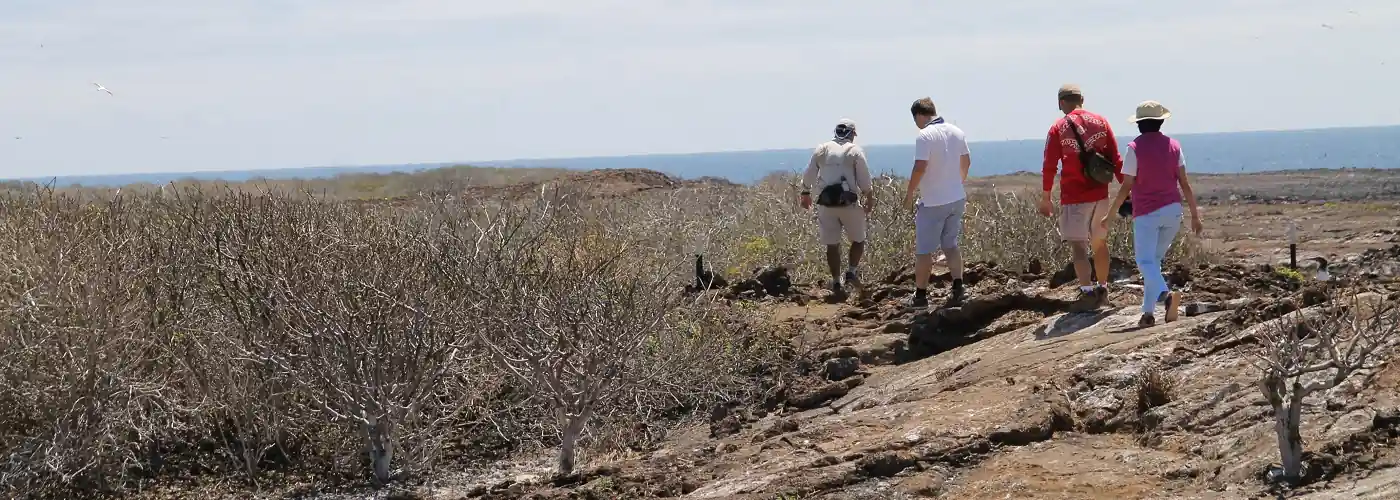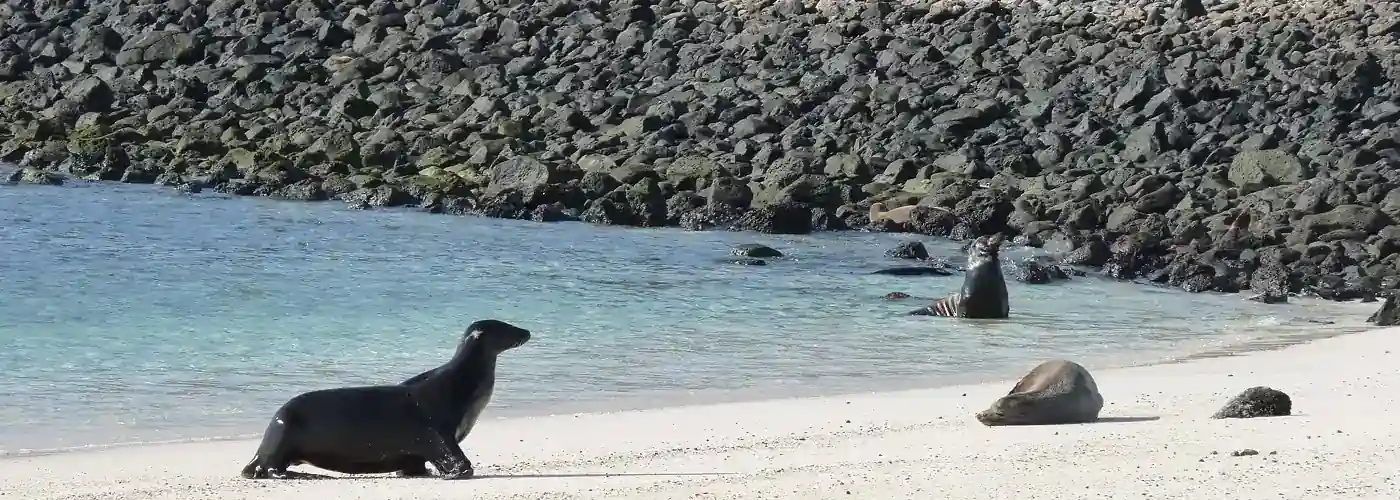8 days cruise catamaran Archipel I – A8
Route A (Mon - Mon): central and western islands
- 8 days
- 2-16
Highlights of the tour
- Greeting by sea lions on different islands
- Flamingos at a saltwater lagoon
- Different species of boobies
- Giant tortoises in their natural habitat
Overview
On this 8-day cruise on the Archipel I, you will experience the central and western islands of the archipelago.
Observe playful sea lions, colorful songbirds, giant tortoises in their natural habitat and learn interesting facts about the history and protection of the islands.
In addition to all the activities and excursions, there will of course be plenty of time to relax, snorkel and swim.
On board of the catamaran you can relax in your cabins and on deck and enjoy your meals while looking at the sea.
Itinerary
Morning – Arrival at San Cristobal Airport: At the mainland airport, you have purchased your TCC or Ingala card and a luggage inspection has already been conducted to ensure that no foreign plant or animal species are introduced. Upon your arrival at the San Cristobal airport, your TCC (Transit Control Card) will be stamped. This must be kept in a safe place during your trip, as it must be presented again on your return flight. In addition, the Galapagos National Park entrance fee is due upon entry (US$200), if not already paid. Your guide will meet you at the airport, help you with your luggage and take you to the ship. After greeting the crew and captain, you will be assigned your cabins and then have your first lunch together.
Afternoon – Interpretation Center, Tijeretas Hills (San Cristobal): You will drive to the interpretation center near the main town of Puerto Baquerizo Moreno. Information panels in English and Spanish, photos, models and diagrams explain the origin of the Galapagos Islands. The detailed exhibit also offers insights into the volcanic formation of the archipelago, the distance to the mainland, ocean currents, the special climate, the arrival of different species and their distribution, and more. After this visit, you will have plenty of time to tour the site. A short, though often hot, uphill trail with steps leads from the interpretation center to the top of Frigatebird Hill. Four viewpoints show Puerto Baquerizo Moreno from above, as well as the bays on both sides of the headland. On clear days, you can even see the distant offshore formation of Kicker Rock! These forested hilltops are one of the rare places where some Magnificent Frigatebirds and Great Frigatebirds form a mixed breeding colony. A viewpoint with another Charles Darwin statue commemorates the fact that HMS Beagle anchored in the exotic bay below.
Meals: Breakfast/Lunch/Dinner
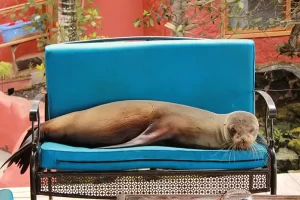 Morning – Santa Fe: After lunch, you will be met directly by a Galapagos sea lion colony on the beach, where you will have time for either a refreshing swim or exceptional snorkeling surrounded by tropical reef fish in the crystal-clear waters of Barrington Bay. In addition, you will see vast opuntia cactus forests. The largest cacti on the island have extremely thick trunks and can grow over 10 meters tall. After a wet landing on Santa Fe beach, take a guided nature walk. This extraordinary island is a remnant of what is probably the oldest volcano in Galapagos. Your guide will decide if an easy, short walk or a strenuous, longer hike inland will follow (moderate difficulty, approximately 3 km).
Morning – Santa Fe: After lunch, you will be met directly by a Galapagos sea lion colony on the beach, where you will have time for either a refreshing swim or exceptional snorkeling surrounded by tropical reef fish in the crystal-clear waters of Barrington Bay. In addition, you will see vast opuntia cactus forests. The largest cacti on the island have extremely thick trunks and can grow over 10 meters tall. After a wet landing on Santa Fe beach, take a guided nature walk. This extraordinary island is a remnant of what is probably the oldest volcano in Galapagos. Your guide will decide if an easy, short walk or a strenuous, longer hike inland will follow (moderate difficulty, approximately 3 km).
Afternoon – South Plaza: You will take an unforgettable guided walk on South Plaza, the best place to encounter the native Galapagos land iguanas. Also, note the unique mix between a male marine lizard and a female land iguana. Once on the top ledge, you’ll get an impressive view of booming waves crashing against the cliffs some 20 meters below. Clouds of petrels, storm petrels, shearwaters and noddy terns delight you with their spectacular flights. Take your binoculars and watch the red-billed tropicbirds with their graceful tails and their spectacular mating fights. These cliffs are also the nesting sites of the native fork-tailed gulls. Before lunch you will sail to Santa Fe, possibly accompanied by bottlenose dolphins.
Meals: Breakfast/Lunch/Dinner
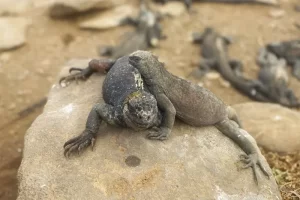 Morning – North Seymour: The shallow little island of North Seymour is an elevated part of the seabed. Among the scraggy bushes you can spot Galapagos Iguanas. You will also see many seabirds such as the brown pelican, red-billed tropicbirds, fork-tailed gulls and, depending on the season, Nazca boobies. The main attraction, however, is Galapagos’ largest breeding colony of blue-footed boobies – be careful not to step on their nests! – and frigatebirds. Early in the breeding season, adult male frigatebirds inflate their bright red throat pouches to nearly the size of a soccer.
Morning – North Seymour: The shallow little island of North Seymour is an elevated part of the seabed. Among the scraggy bushes you can spot Galapagos Iguanas. You will also see many seabirds such as the brown pelican, red-billed tropicbirds, fork-tailed gulls and, depending on the season, Nazca boobies. The main attraction, however, is Galapagos’ largest breeding colony of blue-footed boobies – be careful not to step on their nests! – and frigatebirds. Early in the breeding season, adult male frigatebirds inflate their bright red throat pouches to nearly the size of a soccer.
Afternoon – Chinese Hat: Chinese Hat is a 52-meter-high volcanic cone that forms another small island out of the rocky coast of Santiago, where a small colony of Galapagos penguins has settled. Because its primordial fire went out quite recently, this place is perfect for learning about volcanism, lava bombs and lava tunnels. On the beach you can also discover pillow lava with corals on top. This area was originally underwater before it was raised above sea level. Beaches of white coral sand grow and the holes in the eroding lava fields are filled in with lava sand. Galapagos sea lions and marine lizards contribute to the fertility of the soil. All together, they create more beneficial options for pioneer plants such as saltbush and the staining sesuvium carpet.
Meals: Breakfast/Lunch/Dinner
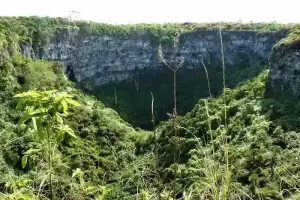 Morning – Twin Craters, El Chato Reserve: The Cráteres Gemelos (twin craters) are located on both sides of the road leading to Puerto Ayora. These impressive formations are not really volcanic craters and were formed by magma domes that hardened on the outside while the lava continued to flow inside, leaving huge empty magma chambers that eventually collapsed, leaving two large holes. The craters lie amidst a lush Scalesia cloud forest, a high-altitude plant species endemic to the Galapagos Islands. This area is also home to the carpenter finch, which uses tools to forage for food. There is also the possibility of seeing the Pajaro Brujo (Vermilion Flycatcher), a small, red-breasted bird. The native Scalesia Forest of El Chato Turtle Reserve is the best place to look for Galapagos giant tortoises in their most authentic environment! Besides the interesting breeding centers – where you are guaranteed to find turtles in their enclosures – there is nothing better than observing them in their natural environment. It can get quite wet and muddy as you embark on an adventurous search for the turtles as they silently leave their favorite pond.
Morning – Twin Craters, El Chato Reserve: The Cráteres Gemelos (twin craters) are located on both sides of the road leading to Puerto Ayora. These impressive formations are not really volcanic craters and were formed by magma domes that hardened on the outside while the lava continued to flow inside, leaving huge empty magma chambers that eventually collapsed, leaving two large holes. The craters lie amidst a lush Scalesia cloud forest, a high-altitude plant species endemic to the Galapagos Islands. This area is also home to the carpenter finch, which uses tools to forage for food. There is also the possibility of seeing the Pajaro Brujo (Vermilion Flycatcher), a small, red-breasted bird. The native Scalesia Forest of El Chato Turtle Reserve is the best place to look for Galapagos giant tortoises in their most authentic environment! Besides the interesting breeding centers – where you are guaranteed to find turtles in their enclosures – there is nothing better than observing them in their natural environment. It can get quite wet and muddy as you embark on an adventurous search for the turtles as they silently leave their favorite pond.
Afternoon – Fausto Llerena Breeding Center (Santa Cruz): At the Fausto Llerena Breeding Center, you will have the opportunity to take amazing photos of the turtles! The tour starts at the GNP information booth. The trail continues to the Van Straelen Interpretive Center, the Breeding Center, and from there a path will take you to see the Española Island turtles, ending at the turtle exhibit enclosure. The turtles of this enclosure are used to people; it is an excellent place to be photographed with them!
Meals: Breakfast/Lunch/Dinner
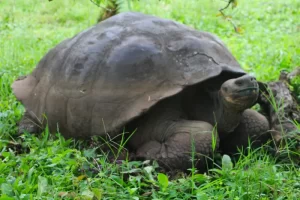 Morning – Moreno Point (Isabela): Punta Moreno is located between the Sierra Negra and Cerro Azul volcanoes, on the north coast of Isabela Island. The trail leads along the lava river Pahoehoe to a complex of several coastal lagoons. The main attraction is various species of birds that can be found at the lakes and in the mangrove forests.
Morning – Moreno Point (Isabela): Punta Moreno is located between the Sierra Negra and Cerro Azul volcanoes, on the north coast of Isabela Island. The trail leads along the lava river Pahoehoe to a complex of several coastal lagoons. The main attraction is various species of birds that can be found at the lakes and in the mangrove forests.
Afternoon – Urbina Bay (Isabela): Urbina Bay is located on the west coast of Isabela, between Elizabeth Bay and Tagus Cove. It is close to the base of the Alcedo volcano. The coastline underwent a major uplift in 1954, extending the shore for one kilometer. Here you will find corals, shells and many other calcareous organisms above water. Urbina Bay is home to the large and colorful land iguanas and giant tortoises of the Vulcan Alcedo population. There are also many Darwin’s finches to be seen.
Meals: Breakfast/Lunch/Dinner
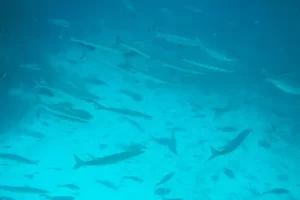 Morning – Espinoza Point (Fernandina): Espinoza Point is the only visitor destination by land on Fernandina Island and one of the few places where you can find some bizarre outgrowths of natural selection. The poster child for this is the flightless cormorant, which lives exclusively on the remote western side of the Galapagos and is a kind of Holy Grail of evolution. You’ll also love the almost alien view of the cone of La Cumbre volcano with its spectacular backdrop. The narrow headland you walk along is the end of the lava tongue that has reached the coast and solidified through contact with the cold sea water.
Morning – Espinoza Point (Fernandina): Espinoza Point is the only visitor destination by land on Fernandina Island and one of the few places where you can find some bizarre outgrowths of natural selection. The poster child for this is the flightless cormorant, which lives exclusively on the remote western side of the Galapagos and is a kind of Holy Grail of evolution. You’ll also love the almost alien view of the cone of La Cumbre volcano with its spectacular backdrop. The narrow headland you walk along is the end of the lava tongue that has reached the coast and solidified through contact with the cold sea water.
Afternoon – Vicente Roca Point (Isabela): During lunch you will cross the Bolivar Channel for the last time to reach Vicente Roca Point, at the mouth of the seahorse-like shape of Isabela Island. Entering a dark cave under a spectacular arch, the echoes of the waves will accompany you. Just around the corner, the collapsed amphitheater of the Ecuador volcano offers you another impressive view. The calm waters of the bay are well protected from the ocean waves. The water is quite cold, but an excellent place to snorkel among various species of sharks, penguins, puffer fish and seahorses.
Meals: Breakfast/Lunch/Dinner
 Morning – Puerto Egas: Puerto Egas, west of Santiago Island, is famous for its fur seal caves, where you will take a special guided walk along the coast. The artificially sculpted coastline of black basalt and multicoloured ash layers form a photogenic backdrop of collapsed lava tunnels, natural arches, caves and holes like “Darwin’s toilet”. In a grotto just below a spectacular stone arch at the end of the beach, a colony of sea lions cavorts in the shade. Hundreds of red cliff crabs glow bright orange on the pitch-black stones.
Morning – Puerto Egas: Puerto Egas, west of Santiago Island, is famous for its fur seal caves, where you will take a special guided walk along the coast. The artificially sculpted coastline of black basalt and multicoloured ash layers form a photogenic backdrop of collapsed lava tunnels, natural arches, caves and holes like “Darwin’s toilet”. In a grotto just below a spectacular stone arch at the end of the beach, a colony of sea lions cavorts in the shade. Hundreds of red cliff crabs glow bright orange on the pitch-black stones.
Afternoon – Rabida: Oxidized iron particles give the stones and sand their rusty color. A green-fringed lagoon hides behind the beach. This oasis is the most fertile place on the otherwise dry island, which is overgrown with Palo Santo trees. The salty pool is attractive to all kinds of water birds, such as pintail ducks and sometimes American flamingos. Hidden among the evergreen foliage of the surrounding mangrove bushes, many species of songbirds breed. An outstanding attraction is the large breeding colony of brown pelicans, the only species that dive.
Meals: Breakfast/Lunch/Dinner
 Morning – Black Turtle Cove (Santa Cruz): This small cove is located on the north side of Santa Cruz Island and offers a unique setting for adventure. The landscape gives you the feeling of being in the Amazon rainforest instead of the ocean. Explore the tranquil emerald lagoon and surrounding flat coves by rubber boat. The crystal clear waters will give you a view of groups of whitetip reef sharks, hammerheads and eagle rays. After this excursion, you will be transferred to Baltra airport for your return or onward flight.
Morning – Black Turtle Cove (Santa Cruz): This small cove is located on the north side of Santa Cruz Island and offers a unique setting for adventure. The landscape gives you the feeling of being in the Amazon rainforest instead of the ocean. Explore the tranquil emerald lagoon and surrounding flat coves by rubber boat. The crystal clear waters will give you a view of groups of whitetip reef sharks, hammerheads and eagle rays. After this excursion, you will be transferred to Baltra airport for your return or onward flight.
Meals: Breakfast/Lunch/Dinner
- Included services
- Accommodation on board in a cabin with private bathroom
- All meals, water, coffee and tea
- All excursions as indicated in the itinerary (subject to change) with bilingual naturalist guide (English-Spanish)
- Airport transfers in Galapagos (only guaranteed if the flight is booked together with the cruise)
- Snorkeling equipment (mask, fins and snorkel)
- Towels for bathroom and beach
- Not included services
- International flight and Galapagos flight
- Entrance fee to Galapagos National Park (USD 200 per person, children under the age of 12 USD 100)
- Transit control card ( USD 20 per person, subject to change)
- Airport transfers in Galapagos (if the flight is not booked together with the cruise)
- Wetsuit
- Soft and alcoholic drinks
- Tips
- Travel insurance and other personal expenses
Hints
Ask us for children or group discount.
Price not valid for Christmas and New Years´s Eve departures.
All prices are subject to change if local tax increases or other circumstances beyond our control occur.
The itinerary is subject to change at any time due to circumstances beyond our control.
In order to rent a wetsuit, we will need your clothing size (S/M/L/XL) before your arrival in Galapagos. Standard wetsuits with a thickness of 3 mm are rented.
Travel Insurance:
To protect your travel investment, we highly recommend the purchase of travel insurance. Travel insurance is intended to cover medical expenses, trip interruption and cancellation, theft and other losses incurred while traveling domestically or internationally.
Visa and Entry Requirements:
Ecuador requires a valid passport (with a minimum 6 months validity). Contact your local embassy or consulate for the most up-to-date visa requirements.
8 days cruise catamaran Archipel I – A8
Get in touch:

Dayana Arias Leon
- +593 (0)2 2194333
- hello@soleq.travel
Other interesting cruises
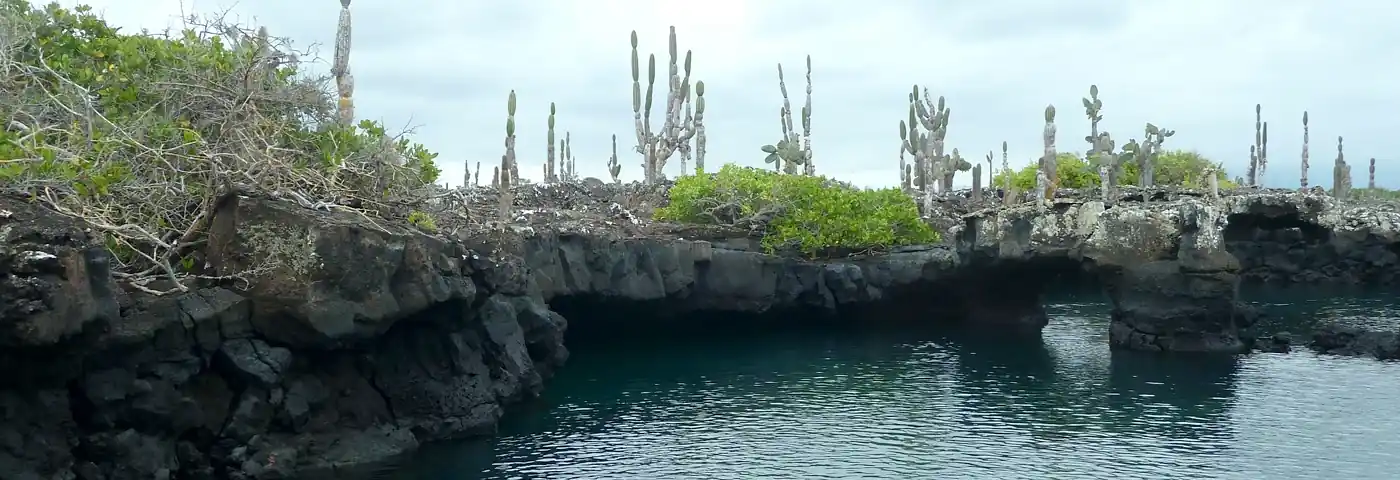

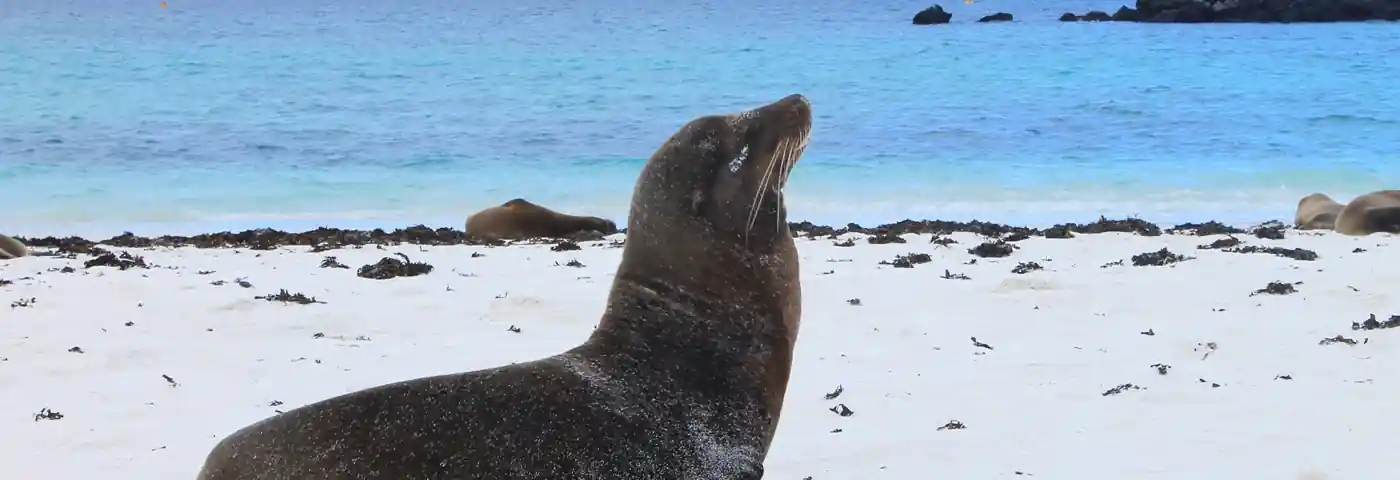


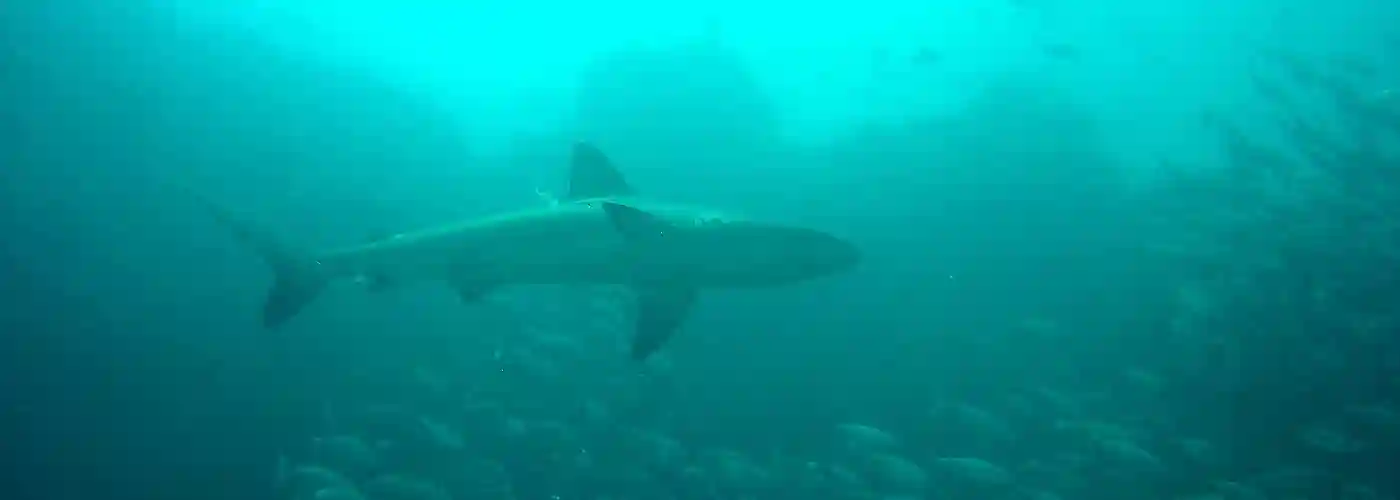
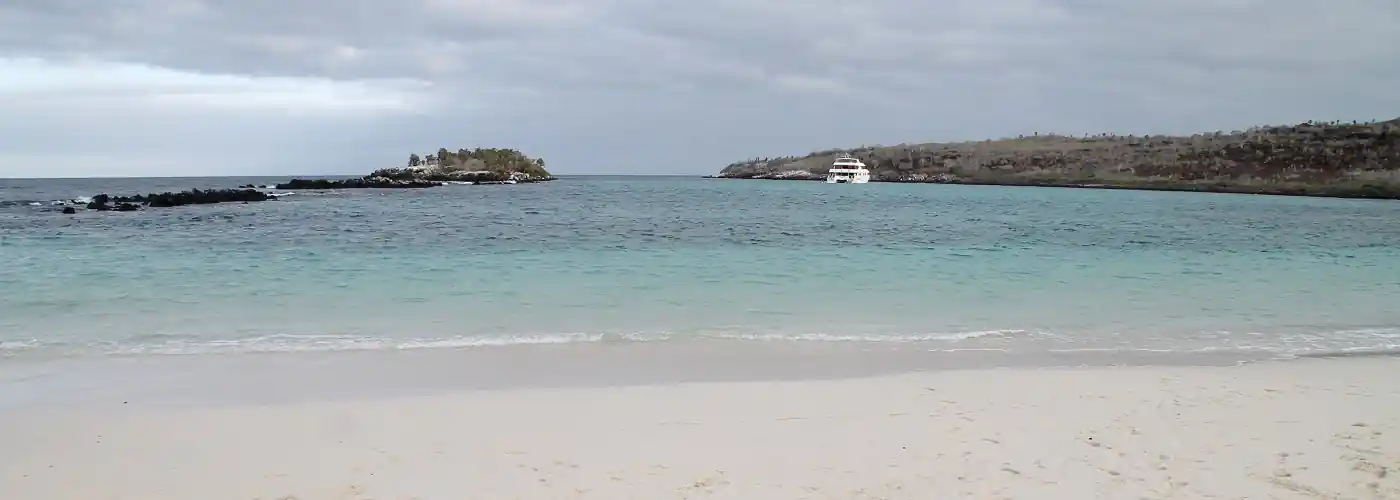
- 8 days
